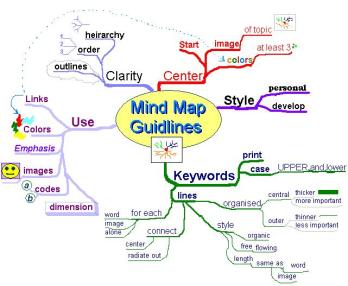As a writing teacher of engineering students, I’m always looking for ways both to help them become better writers and thinkers and to motivate them to do so (I don’t kid myself that they come to an engineering college mainly to take my humanities courses). The Eide Neurolearning Blog’s Writing Problems of Visual Thinkers is a must-read for anyone who teaches writing, regardless of whether you think of your students as visual thinkers:
“The Visual-Verbal Divide is much more common than educators seem to think. It may be we see this difficult especially often because of our interest in dyslexia; we can’t tell you how many times that wonderfully bright visual thinkers are thought to be somewhat simpletons because their words convey so little of the richness of their understanding and experience.” ~ Eide Neurolearning Blog
The end of the article offers practical advice about helping visual thinkers with writing. Two items in particular caught my eye, because I’ve seen them work time and time again.
Elaborate – Recognize that what you frequently need to do is help with elaboration. What do you see? What is the scene? Are there feelings or sensory details that you can put into words (thesaurus!)
In my class about contemporary issues in the humanities, if we are discussing an abstract topic such as “freedom” or “happiness,” students often fail to become hooked by the topic until we make it concrete. A fun and an effective way to do that is to look up the word in a thesaurus (online thesauruses make this an easy group exercise in a classroom with an lcd projector). “Happiness” suddenly becomes beatitude, blessedness, bliss, cheer, cheerfulness, cheeriness, content, contentment, delectation, delight, delirium, ecstasy, elation, enchantment, enjoyment, euphoria, exhilaration, exuberance, felicity, gaiety, geniality, gladness, glee, good cheer, good humor, good spirits, high spirits, hilarity, hopefulness, joviality, joy, jubilation, laughter, lightheartedness, merriment, mirth, optimism, paradise, peace of mind, playfulness, pleasure, prosperity, rejoicing, sanctity, satisfaction, seventh heaven, vivacity, well-being… That’s when the real discussion and thinking and writing begin.
The Eides also suggest to “Mindmap, then Sequence”:
Because visual thinkers may be in their story, they aren’t thinking about a conventional introduction, middle, and end. Instead they may write like a web, relating characters and events, but not forming a logical narrative.

Mindmapping doesn’t work for all of my students, but, when it does, it frees them to go further with their thinking and writing at a level that was previously unavailable to them. Mindmapping is an excellent tool for all kinds of writers and can be used for both fiction and non-fiction and in various stages of the writing process.
If you are unfamiliar with Mindmapping or want a refresher, watch this video by Mindmapping guru Tony Buzan:

1 thought on “Visual Language”
Comments are closed.